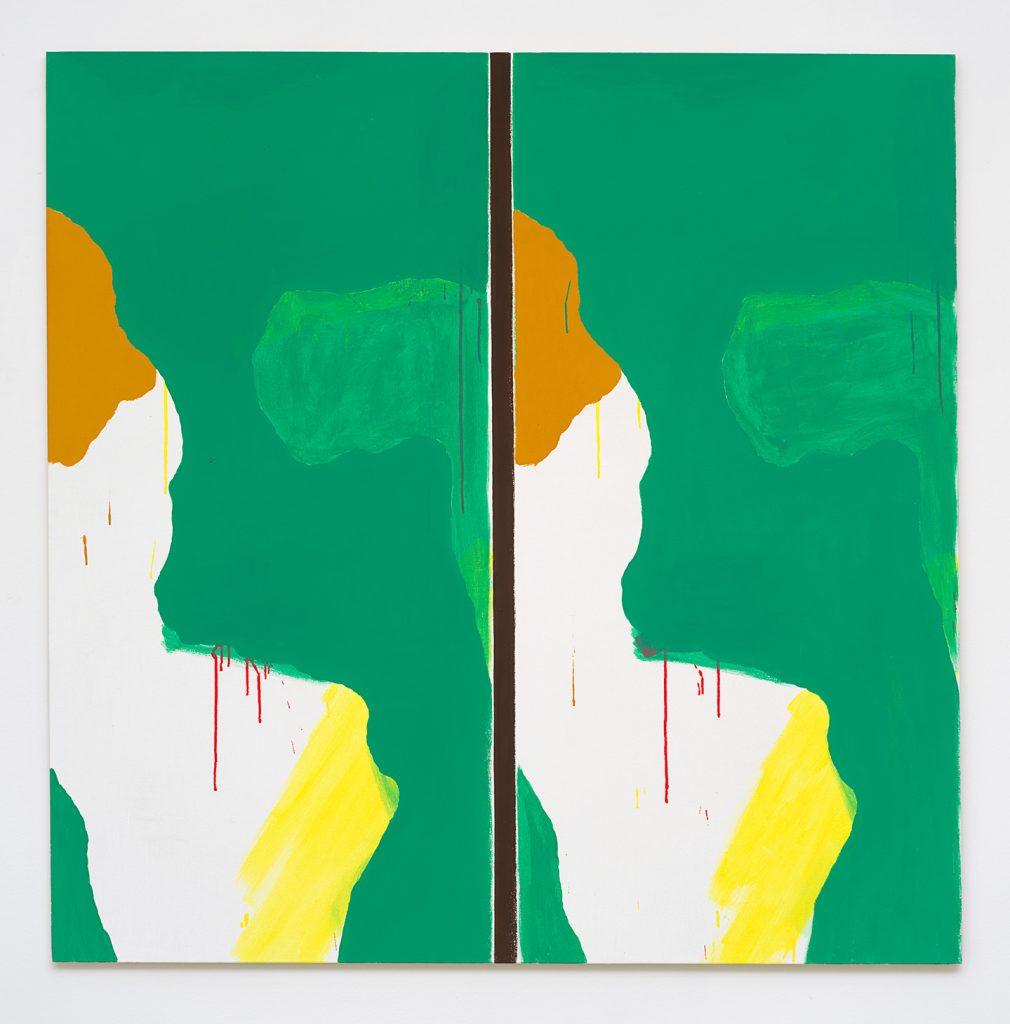Bernard Piffaretti @ Klemm’s showroom | Gallery Weekend Berlin 2021
„In 1986, Piffaretti made the decision to divide each of his canvases into halves with a narrow strip of paint. On one side, he develops an abstract composition with rapid strokes, alla prima, often in high-contrast color. Once complete, he executes the same motif, with precision and in a light hand, on the other half. (…)„

Inquire
For the second day of our showroom presentation we are delighted to present works by Bernard Piffaretti.
Bernard Piffaretti’s works and his artistic approach belong to the central positions in the multi-faceted field of painting and the constant discourse about the nature, the limitations and options of the medium.
Since the late 1980s, Bernard Piffaretti‘s work has been determined by the idiosyncratic principle of duplication, the image double. In doing so, he consistently follows an established pattern: a vertically set, colored line divides the canvas in the middle in two parts and the ‘image’ painted on one side is realized a second time on the other.

Inquire
This happens with immense formal and com-positional security – without technical aids, a la prima, swift, and confident. In addition to this fundamental element of ‚actively appropriating a second time what was already one’s own‚ (J. Asthoff, 2017), Piffaretti relies on the productive tensions that come from the very act of „re-painting“.
It is these ever visible slight variances, drippings, errors, and small, formal differences that actually pull together the two halves of the painting, filling their content with life and vivacity – they generate hence the contextual stage, which makes it possible to incorporate a diverse range of painterly ‚contents‘ and to bring it on the canvas. But the question of dissolving questions of content or composition is not the subject here.
Bernard Piffaretti for Atelier A on the French / German tv. channel Arte.
Bernard Piffaretti (born 1955 in Saint-Etienne, France) has studied at École régionale des Beaux-Arts de Saint- Etienne. He was represented in numerous national and international exhibitions a.o. at FRAC Franche-Comté, Besançon; at Musée des Beaux-Arts de Nantes; at FRAC Haute-Normandie, Sotteville-lès-Rouen; at Musée d’art moderne de Saint-Etienne as well as at MAMCO, Geneva or at Martin-Gropius-Bau, Berlin. His work is documented in several comprehensive publications and monographs and is part of numerous institutional collections.